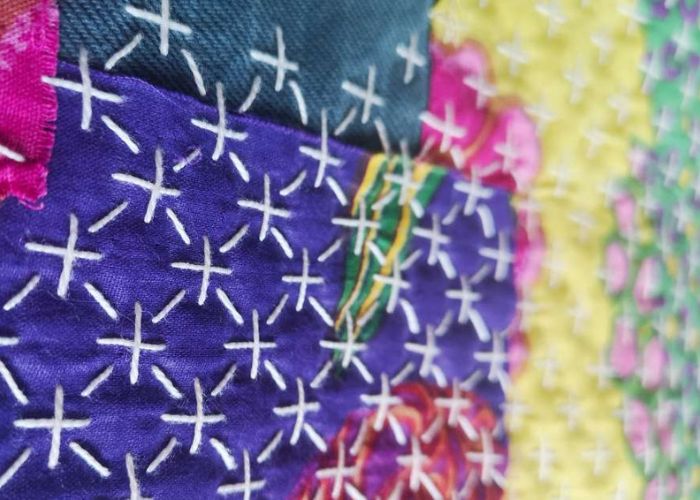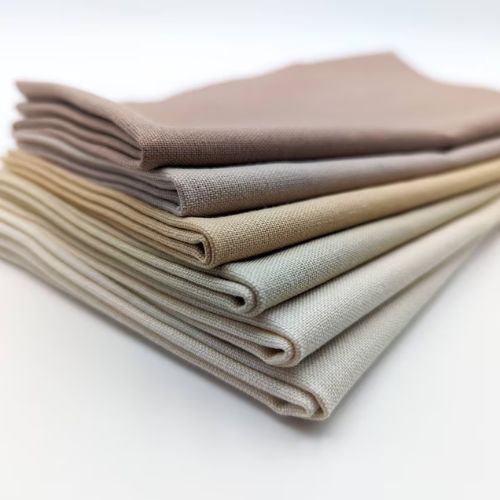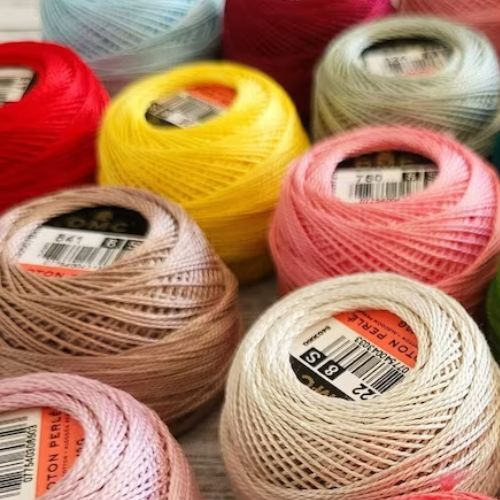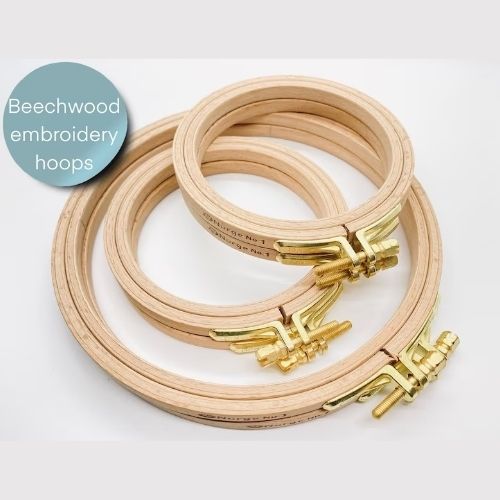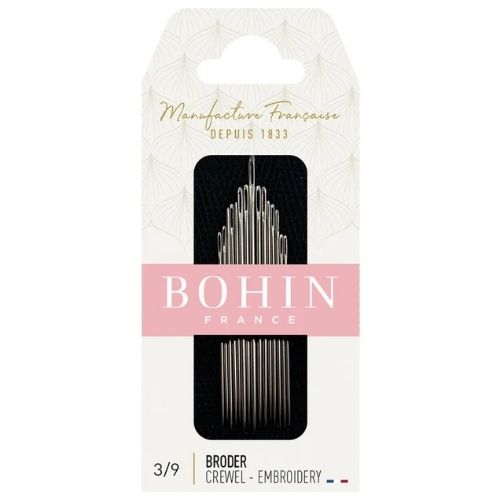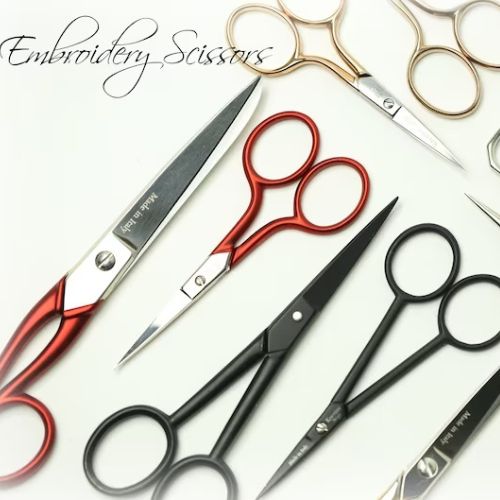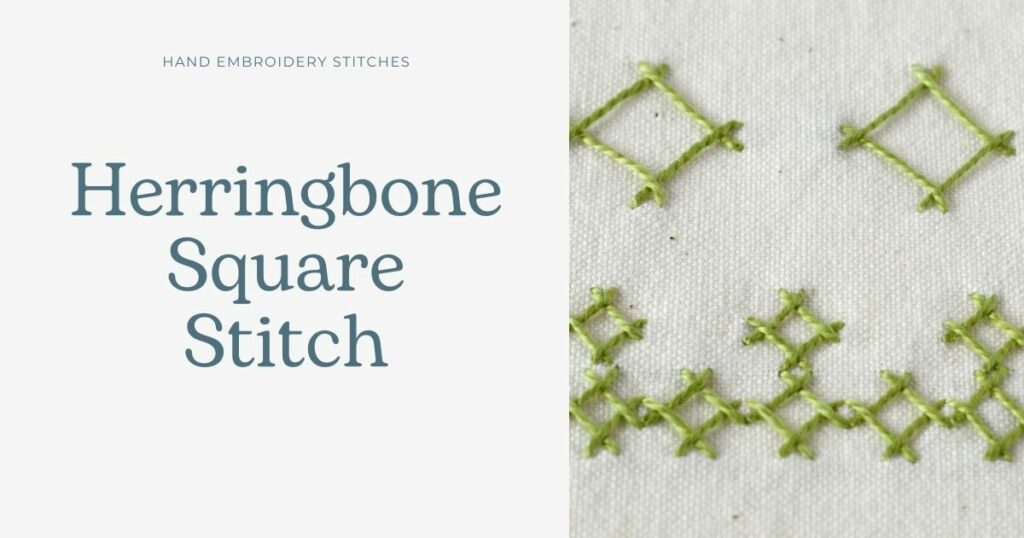
Herringbone Square Stitch
The Herringbone Square Stitch is a detached variation of the Herringbone Stitch worked to form a square shape. Usually, the stitch is worked on counted thread fabric; therefore, to stitch it on plain weave fabric, you will need to draw the grid (or simply mark the dots for the stitches).
When you embroider this stitch, most of the thread will be visible on the front side of the fabric. Comparatively, on the back side, only small stitches at the angles of the stitch will be visible. Hence, when you use this stitch for borders or filling, the jumping threads between the squares will add to the visible thread on the reverse side.
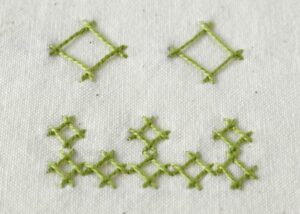
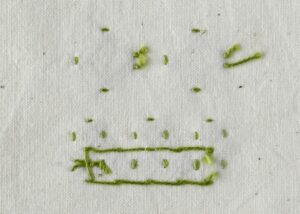
Applications of the Herringbone Square
Single Herringbone Square Stitch looks great as an isolated decorative stitch.
Besides that, you can position Herringbone squares in rows to embellish the borders or arrange them in patterns for original pattern filling.
Finally, you can combine the Herringbone Square Stitch with other stitches – for example French Knots or Detached Chain Stitch – to create interesting and more elaborate decorative elements, borders and embellishments.
More stitches from the Herringbone Stitch family
Learn how to embroider Herringbone Square Stitch
Follow the step-by-step tutorial with detailed photos below, and you will learn the Herringbone Square Stitch quickly. If you are a visual learner, watch a video lesson in the tutorial or on the Practical Embroidery YouTube channel to learn this hand embroidery stitch faster.
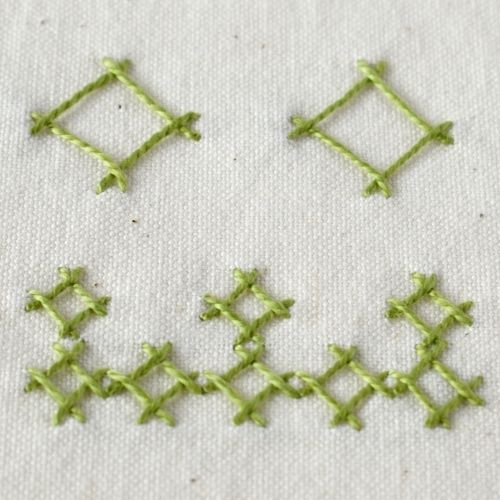
How to embroider Herringbone Square Stitch
Step-by-step hand embroidery tutorial
1. Draw the grid. For one Herringbone Square, you will need a square divided into four quadrants. Take the needle to the surface on the left edge of the square, slightly below the central mark. Make a diagonal stitch to the top of the square. Push the needle down to the right of the central mark. Pull the thread to the back.
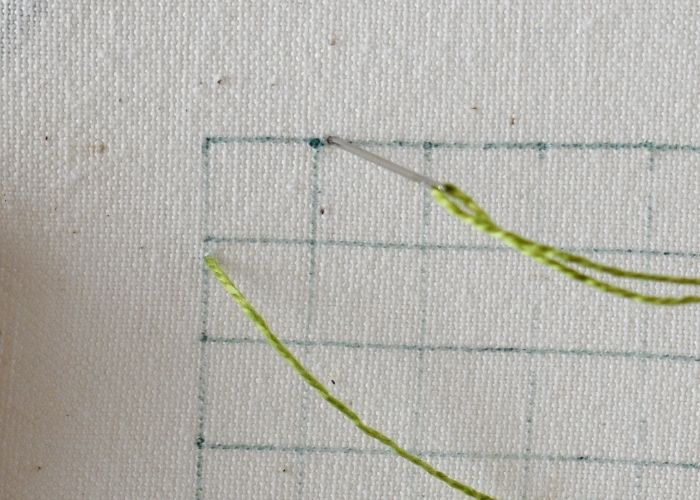
2. Take the needle to the surface on the top line to the left from the central line and make a diagonal stitch to the right. Push the needle down slightly under the central mark on the right side of the square. This way, the second stitch will cross the first one.
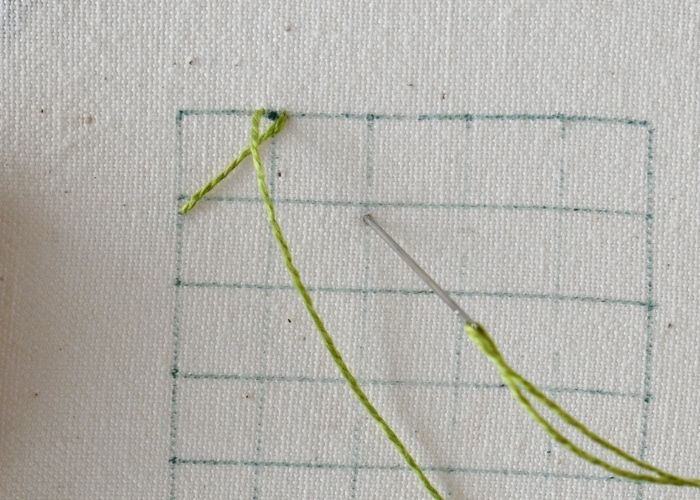
3. Take the needle to the surface above the central line on the right side of the square and make a diagonal stitch down to the base of the square. This will shape the third stitch that crosses the second one.
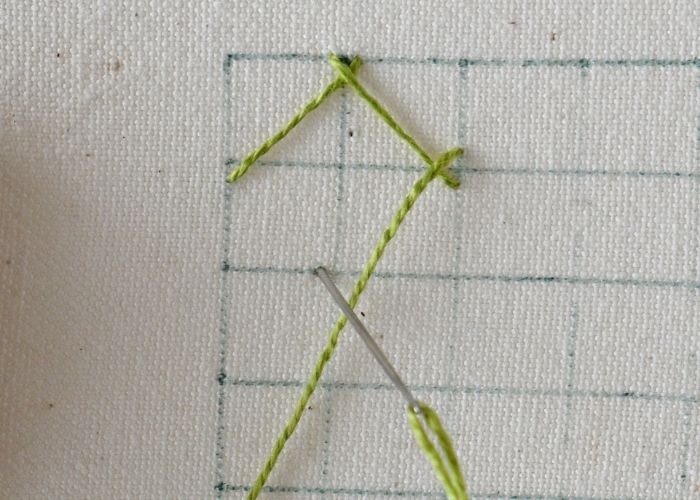
4. Take the needle back to the surface to the right. To make the last stitch of the Herringbone Square, make a stitch above the third stitch, but pass the needle under the first stitch.
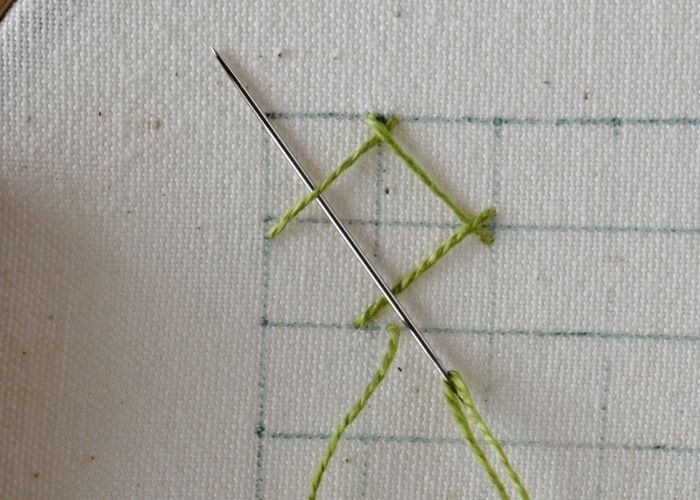
5. Finally, push the needle to the fabric on the left side of the square, above the marking line, and secure the thread on the back.
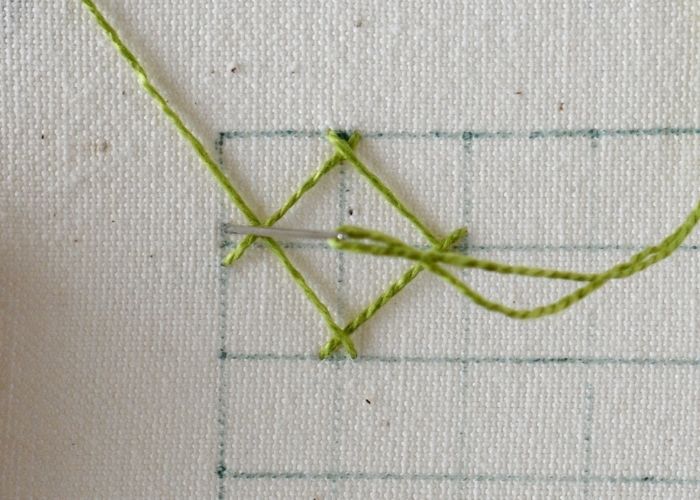
6. To make rows of Herringbone Squares or make filling with this embroidery technique, do not tie off the thread after the first stitch; instead, continue to the next square on your grid and repeat the stitches.
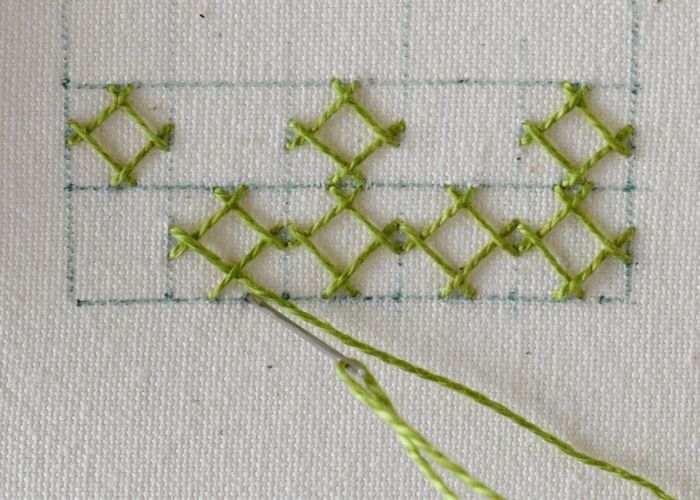
Note that you can work this stitch in any direction—left or right or up and down. You can also start the stitch at any of the corners. For example, if you plan on making a border, start at the top or bottom position, not at the left or right, as this will reduce your jumping threads on the back.
Video tutorial
Tools and materials I used for this sampler
Disclaimer. To cover the cost of creating free embroidery patterns and video tutorials for this blog, I do sometimes link to products. Please assume these links are affiliate links. If you choose to buy through my links then THANK YOU – it will make it possible for me to keep doing this.
What’s next?
If you’re in the mood to explore more hand embroidery stitches, check out the Stitches and Techniques page for the list of other fantastic stitches available on my blog. From timeless classics to modern twists, a whole world of stitches is waiting for you to explore and master. So, grab your hoop and needle, and let’s stitch our way to creative bliss!
Don’t miss a thing!
Follow me on YouTube, Instagram, Facebook, and Pinterest. Or why not subscribe to Practical Embroidery newsletter and get embroidery tips straight to your inbox every few weeks?
Need More Guidance?
The top 10 hand embroidery stitches to learn is a free online course created for beginners.
